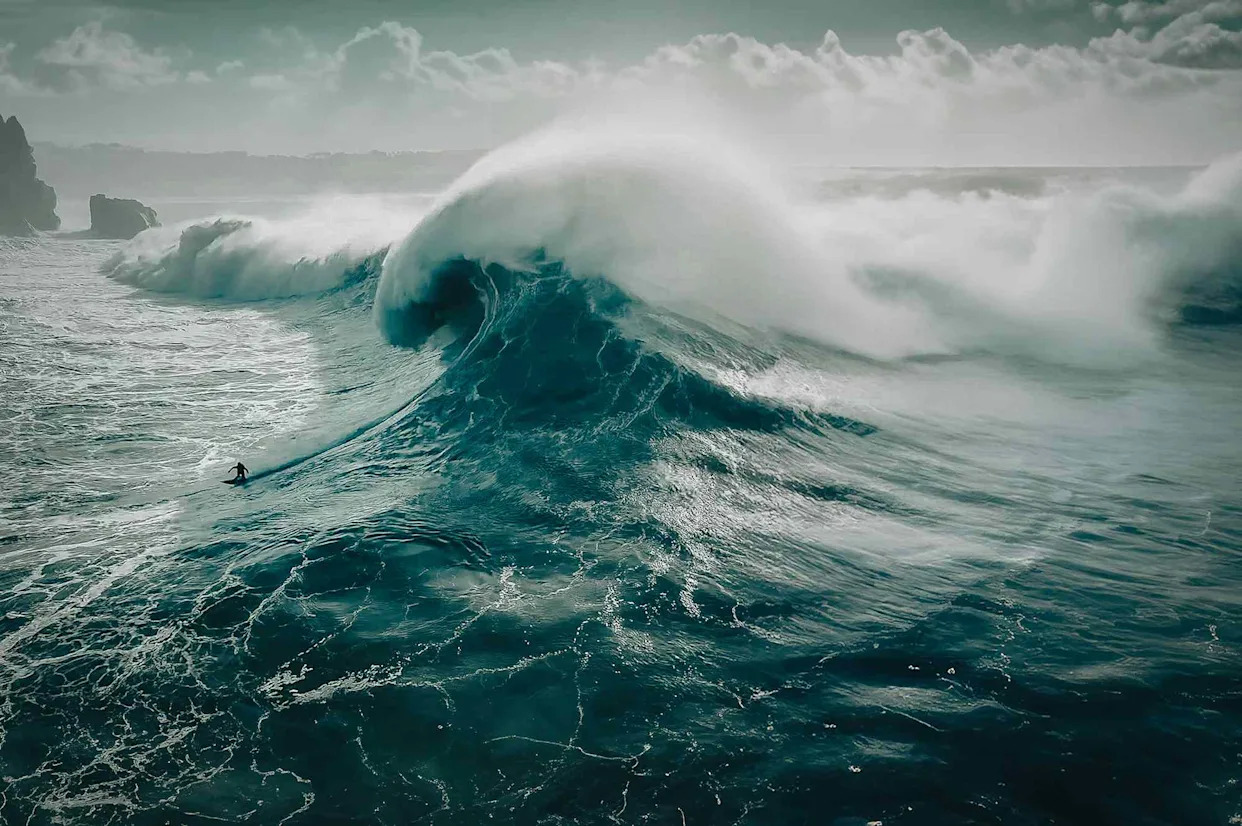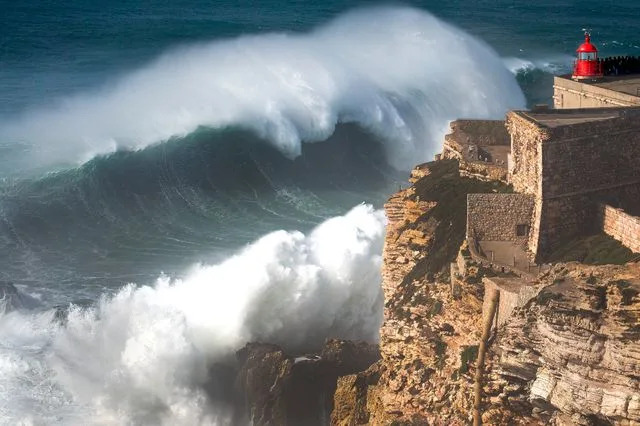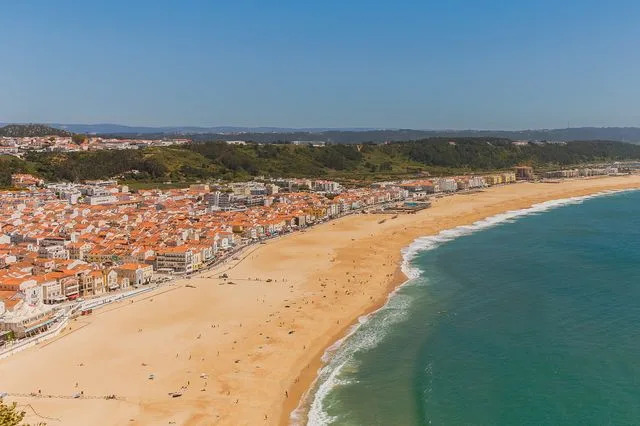This Portuguese Town Has the Largest Surfing Waves On the Planet—With 100-foot-tall Waves Recorded

Key Points
Once a quiet fishing village, Nazaré, Portugal, is home to some of the world's largest rideable waves, reaching up to 100 feet. Learn more about this destination, what causes these massive waves, and when is the best time to view them.
If you’ve ever come across a video of a terrifyingly tall wave on your TikTok, there’s a possibility it was captured off the coast of Portugal. A 1.5-hour drive from Lisbon, the beach town of Nazaré is known for the “Big Wave”—a towering wall of water that looks like something out of the 2000 film The Perfect Storm.
AdvertisementAdvertisement#«R16e4kr8lb2m7nfddbH1» iframe AdvertisementAdvertisement#«R26e4kr8lb2m7nfddbH1» iframeIn early 2024, German surfer Sebastian Steudtner caught a 93.73-foot-tall wave at Nazaré’s Praia do Norte, what might be the tallest recorded wave ever surfed (Guinness hasn’t confirmed it yet). Steudtner did, however, nab the current world record after surfing an 86-foot-tall wave off the same beach in 2020.

RichardALock/Getty Images
A giant wave crashing into the cliffs and lighthouse in Nazare.These massive waves may seem like anomalies, but there’s a scientific reason they exist. The Nazaré Canyon, also known as the largest underwater canyon in Europe, extends approximately 130 miles west of Portugal. At its deepest point, the canyon reaches over 14,000 feet below sea level.
Swells refract (switch direction) as they make their way over different depths, so this abrupt change between the canyon and the continental shelf magnifies the swell, helping create the giant waves that travelers come from far and wide to see. Other factors, such as the direction of the current and converging waves, also play a key role.
If you want to spot or surf one of the Big Waves yourself, you’ll want to visit during “Big Wave” season, from October to March. This time of year is your best chance to see the natural occurrence, but witnessing a 100-foot-tall wave isn’t always guaranteed.

PierreOlivierClementMantion/Getty Images
The city of Nazare, Portugal and the Praia da Nazare beach.No matter when in the season you decide to come, it’s recommended to stay for at least a couple of weeks if you can. An extended timeline will increase your chances of seeing the famous waves. You can also plan your trip around the annual Tudor Nazaré Big Wave Challenge, which brings some of the world’s most talented (and brave) surfers to this part of Portugal.
AdvertisementAdvertisement#«R1ee4kr8lb2m7nfddbH1» iframe AdvertisementAdvertisement#«R2ee4kr8lb2m7nfddbH1» iframeThe Nazaré Waves website details a daily and weekly forecast—noting if the waves are expected to be “medium,” “big,” or “giant”—and you can check the action via two live webcams. When you’re in town, seek out the best views of the waves by heading up to Forte de São Miguel Arcanjo, where you’ll find the Nazaré Lighthouse; both are excellent viewpoints. You can also stay on ground level at Praia do Norte, but be sure to keep a safe distance from the water.
Read the original article on Travel & Leisure













